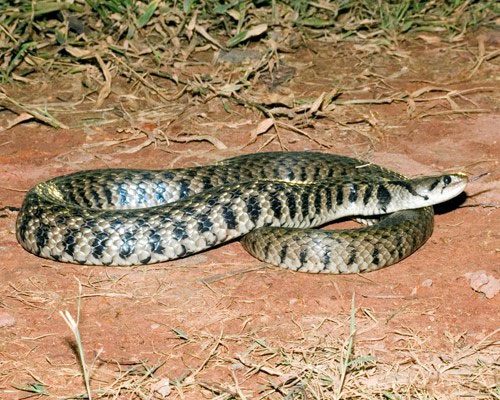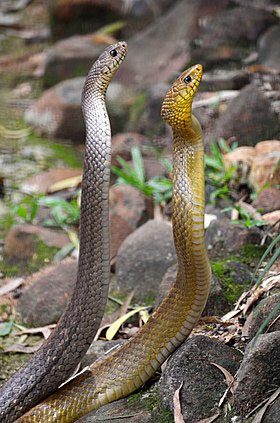While photographing at the wildlife sanctuary in Keenesburg, Colorado, USA, photographer Mike Reardon accidentally witnessed a confrontation between a rabbit and a bull snake. It seemed that the timid rabbit would easily succumb and become a meal for the predator, but unexpectedly, the hunting trip turned into a fierce battle for survival between the two animals.
Rabbits – Frequently Hunted Animals

Rabbits are small mammals living in many parts of the world. (Photo: Dailymail).
Rabbits are small mammals classified in the family Leporidae of the order Lagomorpha, found across various regions worldwide. The first known rabbits to humans appeared around 1000 BC in Europe. European wild rabbits are the only species that have been domesticated into house rabbits. Wild rabbits are larger than domestic rabbits, with longer ears and spotted fur. They burrow in the ground and do not live in groups.
Wild rabbits have strong hind limbs and well-developed muscles that serve as a defense mechanism against predators. Due to the position of their eyes on their skull, rabbits have nearly 360-degree vision, with a blind spot at the tip of their nose. The body of a wild rabbit resembles an egg shape. Their fur comes in various colors along the same strand, serving as camouflage.

Wild rabbits have strong hind limbs and well-developed muscles. (Photo: Dailymail).
Their ears are very large because they are used to detect and evade predators. For rabbits, the length of their ears is usually greater than their width. Rabbit ears are crucial for thermoregulation and detecting threats, depending on how the three parts of the ear—inner, middle, and outer—interact. The muscles in a rabbit’s ears help maintain balance while running away from predators.
As prey animals, rabbits must always be aware of their surroundings. For example, in the Mediterranean regions of Europe, rabbits are the main targets hunted by red foxes, badgers, and Iberian wildcats.

Rabbit ears are very large because they are used to detect and evade predators. (Photo: Dailymail).
When facing a potential threat, rabbits display signs of fear and observe their surroundings, then alert their peers by thumping the ground. They avoid capture by burrowing underground, zigzagging while fleeing, and if caught, they can deliver a powerful kick with their hind legs. Strong teeth allow rabbits to chew and bite at their enemies to escape.
Bull Snakes – Fierce Predators
Bull snakes, also known as gopher snakes or Carolina pythons, are a species of non-venomous snake belonging to the colubrid family. Bull snakes are diurnal, living both in trees and on the ground, and they move quickly. They feed on various prey and are often found in areas with abundant rodent populations.

Bull snakes are diurnal, living both in trees and on the ground. (Photo: Dailymail).
The common length of bull snakes ranges from 1.5 meters to 1.95 meters, with the longest recorded bull snake measuring 3.7 meters. An interesting feature of bull snakes is their ability to flatten their necks like cobras and make hissing sounds. Additionally, they can leap upward or strike forward to attack their prey.
According to ecologists, bull snakes typically inhabit plains, foothills, and thickets, often taking over burrows made by rodents as their own dens.

Bull snakes forage throughout the day. (Photo: Dailymail).
Although they are terrestrial reptiles, bull snakes are also excellent climbers and swimmers. They can be seen both during the day and at night since they are active hunters throughout the entire day.
An Unexpected Turn of Events
However, predators do not always win. During the encounter at the wildlife sanctuary in Keenesburg, the bull snake faced a fierce counterattack from its opponent, turning the hunting expedition into a disaster.
The intense battle between the rabbit and the snake. (Source: Dailymail).
Upon spotting the rabbit, the bull snake lunged to attack. Unfortunately for the snake, instead of fleeing, the rabbit stayed to confront it. Despite the snake’s continuous biting attempts, the rabbit managed to leap in circles and evade capture. At one point, the snake did bite the rabbit’s ear, but after 10 minutes of persistent retaliation, the rabbit ultimately defeated the bull snake. Having missed its prey and suffered defeat, the bull snake had no choice but to retreat.





















































